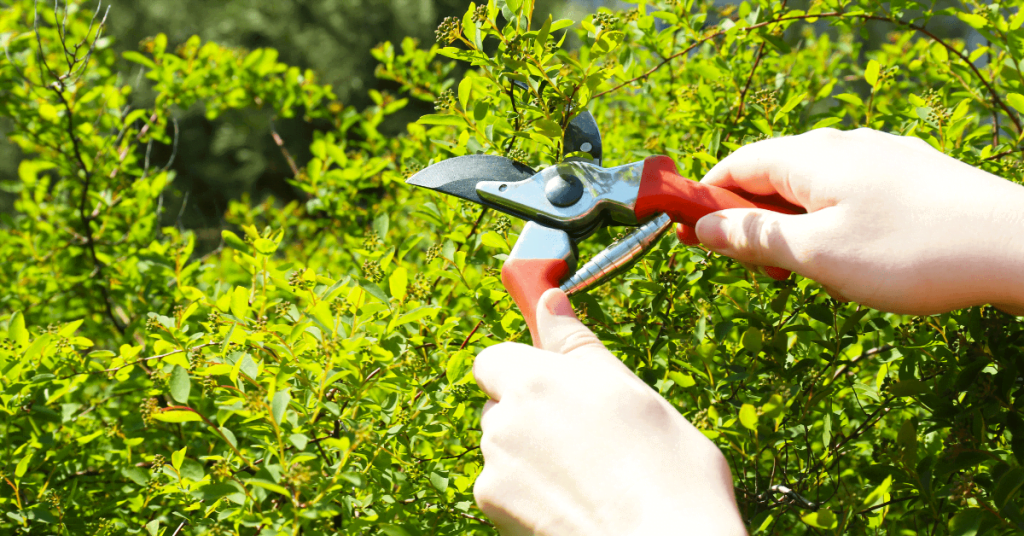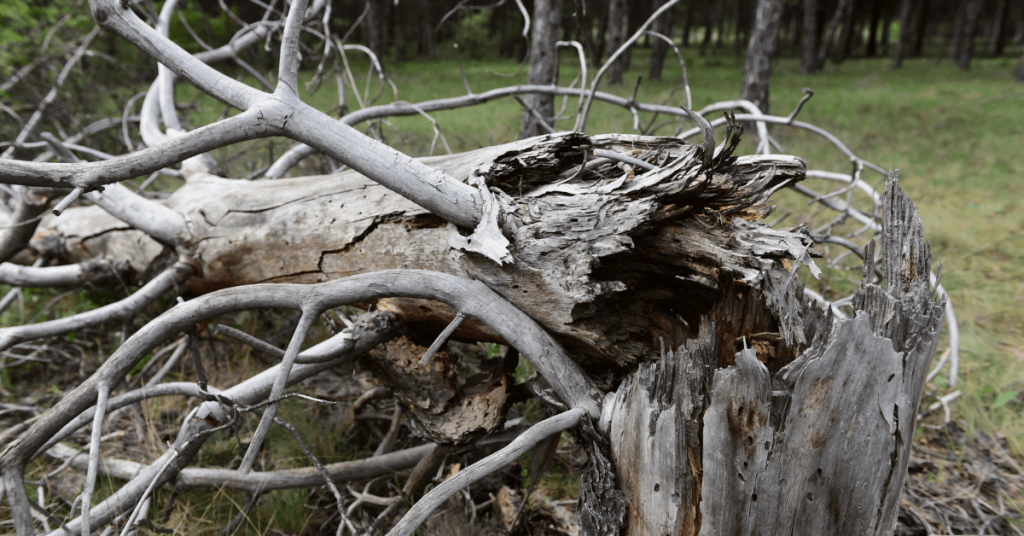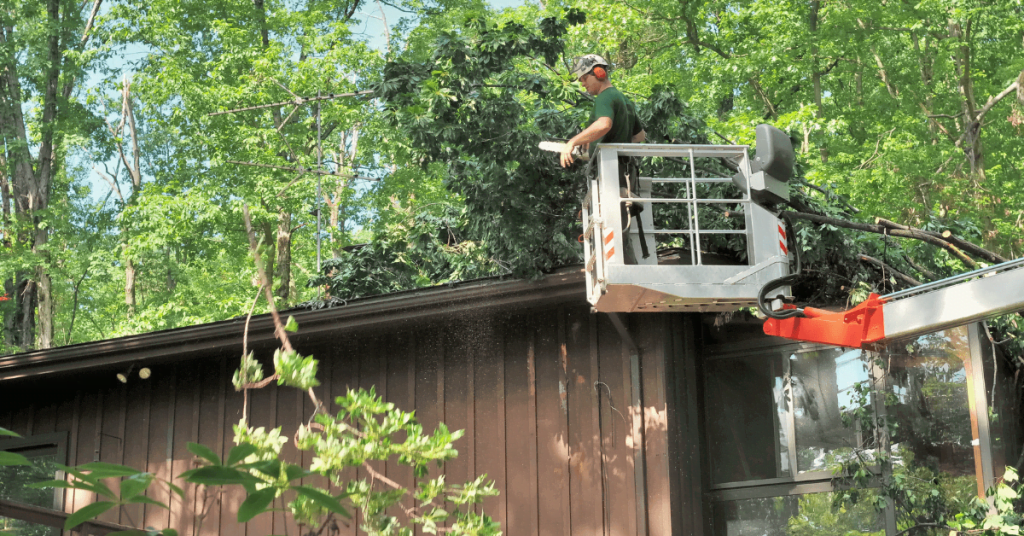When it comes to taking care of your yard and landscaping, one important activity that you should include regularly is tree trimming.
Tree trimming can help keep trees healthy, improve property aesthetics, eliminate potentially hazardous branches and provide vital protection in the event of storms or high winds. It might seem like an intimidating task to tackle yourself but with some basic knowledge and guidance, you can do it safely!
In this blog post, we will walk through all the steps needed for successful DIY tree trimming so you can take charge of caring for your outdoor space without fear.
Essential equipment for DIY tree trimming
To ensure successful and safe DIY tree trimming, it is important to have the right safety gear and tools:
- Safety glasses
- Ear protection
- Gloves
- Pruning saws
- Loppers
- Pruning shears
- Ladders (if needed)
Steps For DIY Tree Trimming
Once you have the necessary equipment and safety gear, it’s time to get started on your DIY tree-trimming project. Follow these steps for safe and effective trimming:
- Analyze the tree and mark areas that need to be trimmed or pruned
- Start at the bottom of the tree and work your way up
- Trim away dead, diseased, or broken branches
- Cut back any lateral branches growing in an undesirable direction
- Work from large to a small sizes when cutting
- Prune away any branches that are crowding the tree or those that cross each other
- Use a ladder if needed for hard-to-reach areas
- Dispose of all trimmed branches properly
By following these steps and using the right safety gear and tools you can successfully undertake DIY tree trimming. However, if you are not comfortable with this task or unsure of your abilities it may be best to seek professional help from a certified arborist. They will have the proper knowledge and equipment to get the job done safely and effectively.
Remember, with the right tools and safety precautions, you can take charge of caring for your outdoor spaces without fear! Tree trimming is an important way to keep trees healthy and enhance the look of your property so make sure it’s part of your regular maintenance routine.
How to identify which branches need to be trimmed?
To identify which branches need to be trimmed, look at the overall shape of the tree.
- Consider whether any dead or spindly branches are detracting from their fullness and symmetry. Pruning away excess foliage can help to improve circulation and light penetration within the canopy and reduce overcrowding of leaves, buds and shoots on a branch.
- Additionally, inspect the tree for any potentially hazardous branches, such as those that hang too low or have been damaged by storms.
- Lastly, consider pruning away branches that are intersecting other parts of the tree such as branches growing inwardly towards the trunk or limbs crossing over each other.
Doing so can help to improve circulation and reduce competition between branches for nutrients and water. It can also help to reduce the risk of disease or pest infestation in certain areas of the tree.
Pruning is a great way to keep your trees healthy, so take some time to inspect them thoroughly before deciding which branches need trimming.
Determining the direction of the fall of the branches to be removed
After identifying the branches to be removed, you should then determine which direction they should fall.
Properly pruning a tree involves making sure that the cut is made with the natural angle of the branch in mind, so it’s important to make sure this is done correctly:
- If you’re removing smaller branches at the end of a larger one, always make sure to cut them as close to the collar (the swollen area where the branch and trunk meet) as possible.
- For large branches, use the three-cut method to prevent any tearing or splitting of wood that could cause damage to the tree. Make an undercut a few inches away from the collar on the bottom of the branch. Then, make a second cut on top of the branch about five inches out from the first and finally, go back and finish off with a final cut at the collar.
- When removing branches that are growing in a direction you want to keep clear such as around a driveway or walkway, make a cut perpendicular to the branch.
- When pruning overhanging branches that may come into contact with buildings or power lines, it’s important to always use extreme caution and possibly consult with an arborist to determine the safest way to proceed.
- Never top a tree, as this practice weakens the entire structure and increases the risk of disease to the tree.
Once you’ve determined which branches need to be removed and in what direction they should fall, then it’s time to move on to making the cuts. Always use sharp pruning shears or saws while pruning to ensure a clean cut. Make sure to dispose of any branches or debris properly after pruning is done.
Additionally, it’s always important to use the proper safety equipment when working with trees – wear closed-toe shoes, gloves and goggles while pruning. Following these steps should help you with a successful pruning job!
How to use pruning shears, loppers and saws?
Pruning shears, loppers and saws are all important tools to have when pruning trees. Pruning shears are great for smaller branches that are less than ¾ of an inch in diameter.
Loppers can handle anything between ½ to 1 ½ inches in diameter and saws should be used for larger branches or limbs over 1 ½ inches thick. Always make sure to use sharp tools to ensure a clean cut and minimize damage to the tree’s bark or tissue.
When using saws, always start by making an undercut at the bottom of the branch before making a top cut further up the branch. Doing so will help to prevent any tearing or splitting.
Tips for properly caring for the tree after trimming
After pruning your trees, there are a few other steps you can take to ensure their health and longevity:
- Apply a sealant or wound dressing to any freshly cut areas. This will help to protect the tree from pests and disease while it’s healing.
- Fertilize regularly, but be sure not to overdo it as too much fertilizer can cause damage to the roots.
- Water deeply when needed, as this helps to encourage deep root growth.
- Mulch the soil around the tree, which will help to retain moisture and prevent weeds.
- Regularly inspect your trees for any signs of disease or pest infestation.
Following these tips should help you keep your trees healthy and looking great! With a little effort and proper care, you can ensure the beauty and longevity of your trees for years to come.
Wrap Up
Now that you know how to trim your trees, there’s no need to spend hundreds of dollars on a professional. Because the average charges for tree pruning are around $200 to $800 per tree, depending on its size and condition. With the right knowledge and a bit of patience, you can save money by pruning your trees! Just be sure to always use caution and safety measures when working with ladders or sharp tools.
Follow these tips properly. With the right tools and technique, tree trimming is a breeze!



